Rice Bran Wax Uses: A Comprehensive Overview
What is Rice Bran Wax?
Rice bran wax is the natural lipid synthesized by biochemistry in the process of rice growth. It is the ester mixture composed of high-level fatty acid and high-level monohydric alcohol, coexisting in the skin layer of rice grain together with oil and grease and so on, in the process of oil extraction from rice bran or oil making by solvent leaching, it separates out with oil and grease. It is the by-product obtained in the process of refining edible rice bran oil and it is also an essential raw material of the oil and grease chemical industry.
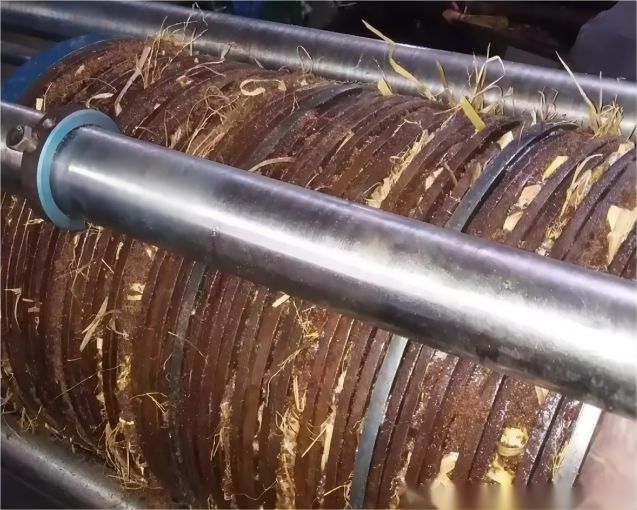
What Is the Composition of Rice Bran Wax?
In addition to wax ester, crude bran oil contains more free fatty acid, sterol, sterol ester, ferulic acid ester, and glutenin, as well as hydrocarbons, colloid, phospholipids, pigment and other impurities, the composition is very complicated. Through the process of deacidification, decolorization and so on, there are few impurities except wax in rice bran oil. Therefore, the wax paste obtained by three removes, and then the refined bran wax produced by pressing saponification or solvent treatment, except for containing a small amount of oil and grease, has been quite pure. Although rice bran wax belongs to natural wax, it is an industrial refined product, its composition is simple and stable, unlike Brazilian carnauba wax, small candelabra wax, beeswax and other natural waxes whose composition is very complicated and whose quality varies greatly.
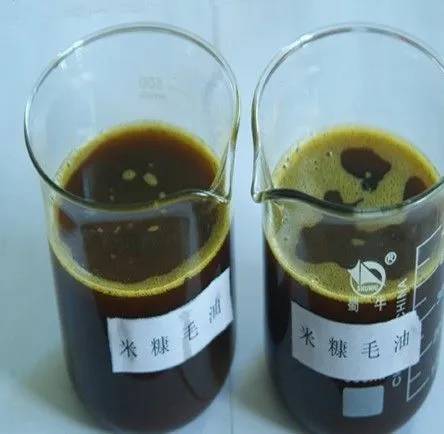
In pure rice bran wax, apart from the wax esters, there are only very small quantities of oils and fats and almost no other impurities. The decrease in purity is mainly manifested by the increase in oil content (expressed by acetone soluble matter) and the slight increase in impurities. Industrially refined rice bran wax is a mechanical mixture of rice bran wax esters and small amounts of neutral oils and impurities.
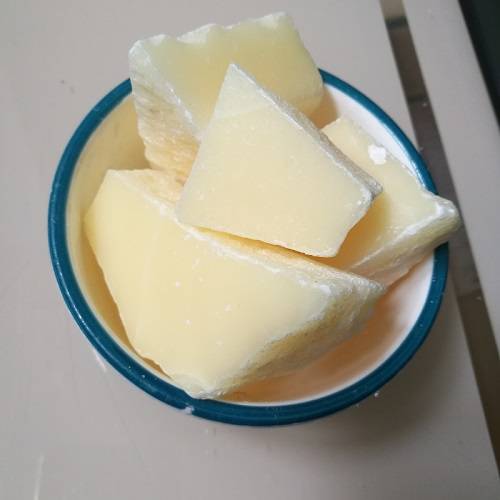
Composition of Rice Bran Wax
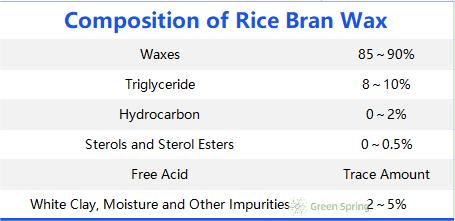
Rice Bran Wax Hydrolysis Product Composition (%)
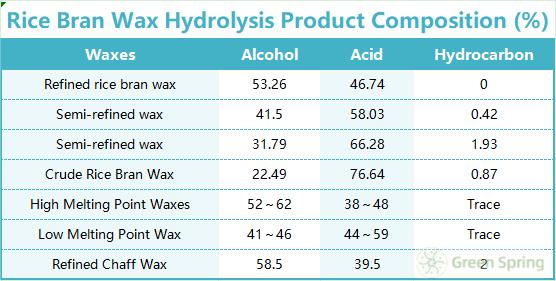
Rice bran wax ester is a mixture of aliphatic esters with different carbon chain lengths. The average molecular weight of rice bran wax esters is 740-800, and the molecular weight distribution range is 600-900. The carbon chain length distribution of wax ester molecules is from Cu to C₈2. There are few below C₂.
Rice bran wax ester is formed by combining a variety of fatty alcohols and fatty acids with different carbon chain lengths. The average molecular weight of fatty alcohol (wax alcohol) in wax ester is 430~460, and the average molecular weight of fatty acid (wax acid) is 340~360, and the ratio of alcohol to acid in wax ester is 52~56; 38~48.
There are C₂2~C₃g nine kinds of even-carbon fatty alcohols and a small amount of odd-carbon alcohols in rice bran wax alcohol. Acetic acid is mainly composed of dicosanoic acid (sanguinic acid) and eicosanoic acid, other even-carbon acids are not much, and odd-carbon acids and unsaturated acids are few.
Molecular Carbon Number Composition of Rice Bran Wax Esters ( % )
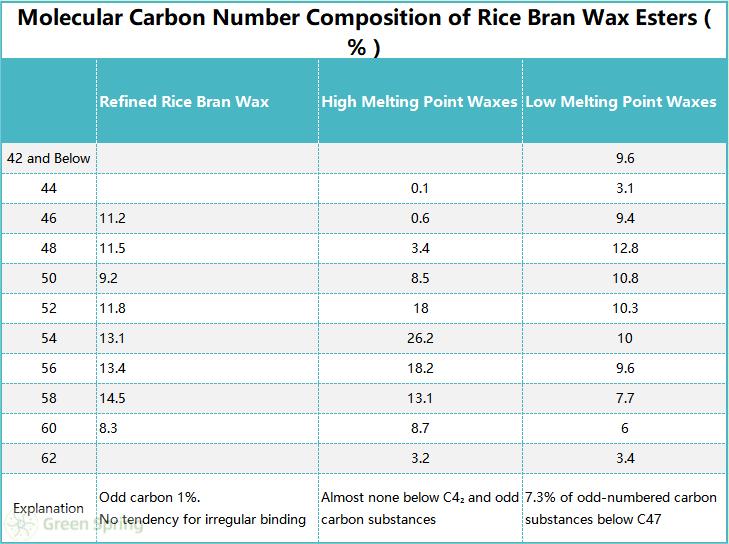
Fatty Alcohol Composition of Rice Bran Wax (%)
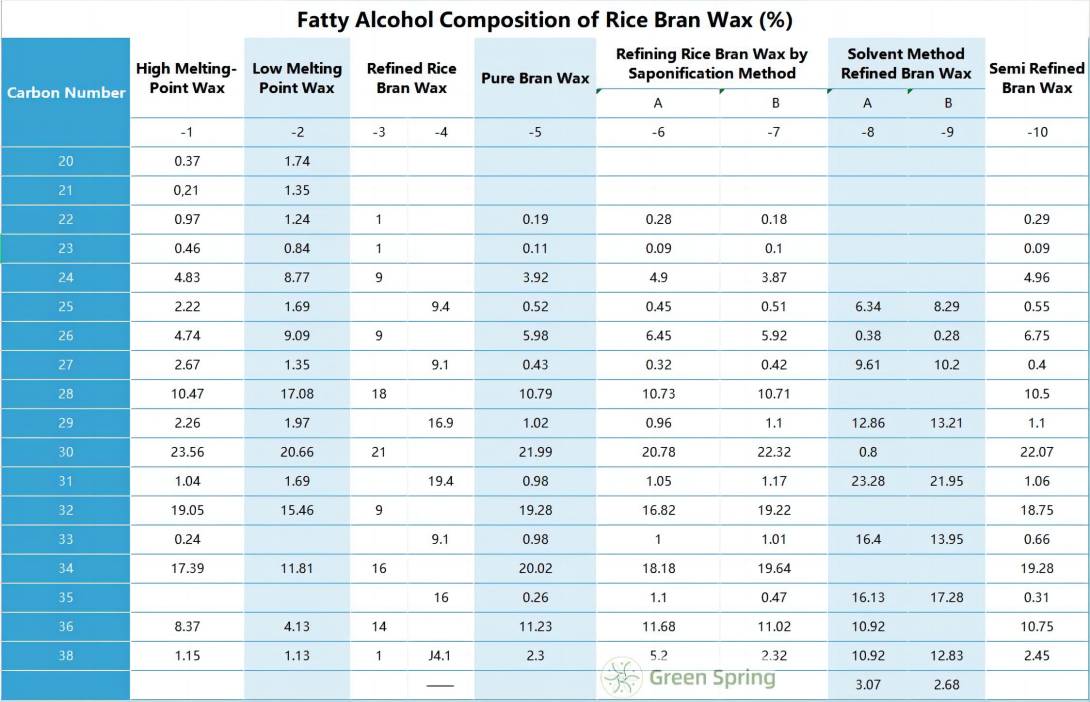
Rice Bran Wax Melting Point, Physical and Chemical Properties
The physical and chemical properties of rice bran wax are generally between Brazilian carnauba wax and beeswax, and close to Brazilian carnauba wax, with individual properties superior to those of Brazilian carnauba wax, and it has good usability properties.
1. Melting Point
The rice bran wax melting point is 78~82℃, higher than beeswax, floor wax, paraffin wax, only after Brazilian carnauba wax, lignite wax, and small candle tree wax. The melting point of Japanese high melting point wax is 82~83℃, and the melting point of Brazilian carnauba wax is comparable. The melting point of domestic rice bran wax is 78~80℃.
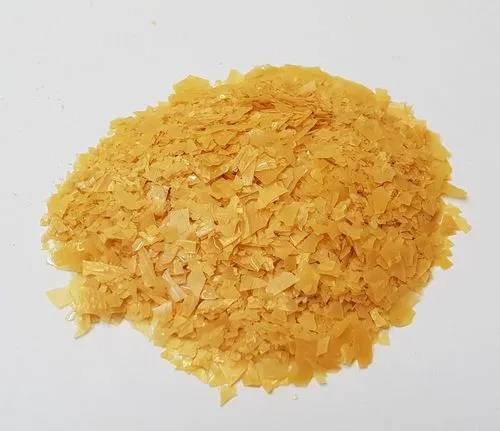
2. Properties and Color
Rice bran wax is a brown hard solid. The wax with a high degree of refinement is brown, brownish red. After bleaching treatment is orange, light yellow to white.
3. Specific Gravity
The specific gravity of rice bran wax is smaller than that of water, higher than that of beeswax and other soft waxes, and slightly lower than that of Brazilian carnauba wax and other hard waxes. The specific gravity of rice bran wax is 0.97 at room temperature and 0.78 at 100℃ in liquid state.
4. Expansion Coefficient
Expansion coefficient of rice bran wax solid at 25℃ is 0.0011, 100℃ liquid is 0.00064.
5. Hardness
The durometer hardness of rice bran wax is 95 at 4°C, 76.50 g at 25°C, 5 s, 0.5 degree of penetration at 25°C, and 7 at 100 g. The hardness of rice bran wax is 0.5 at 25°C and 7 at 100 g.
6. Rising Power of Melting Point
The rising power of the melting point of rice bran wax is greater than that of low melting point waxes such as paraffin wax and lower than that of Brazilian carnauba wax.
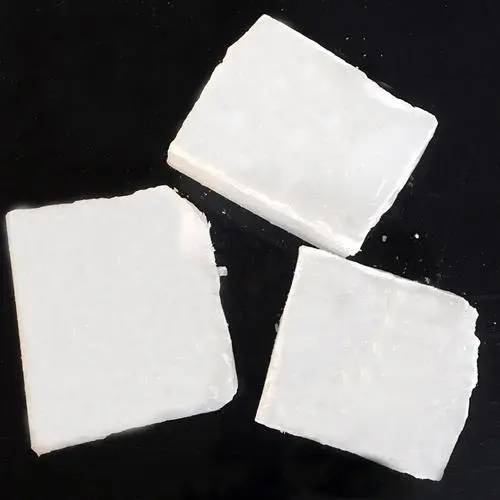
7. Glossiness
Rice bran wax has good gloss, 1.2-1.5 times as much as Brazilian carnauba wax and beeswax. The higher the degree of wax refinement, the higher the gloss.
8. Solvent Absorption Rate
The solvent absorption rate of rice bran wax is between that of Brazilian carnauba wax and beeswax and ground wax.
9. Solvent Retention
The solvent retention of rice bran wax is similar to that of carnauba wax.
10. Emulsifying Properties
Rice bran wax can emulsify to form stable emulsion. High melting point rice bran wax when made into water-in-oil emulsifier, the emulsifier is required to have a pro-abhorrent balance value of HLB is 6 to 7. low melting point wax is 8 to 9.
Chemical Properties
The chemical constants of rice bran wax include saponification value, acid value, iodine value and acetyl value.The theoretical saponification value of pure bran wax is 70~76. industrial refined bran wax contains neutral oil and grease, its saponification value is slightly higher, usually 72~80. low melting point wax itself wax ester molecular weight is small, oil content and more, saponification value is higher (81~105). Hydrogenated bran wax is made of crude wax hydrogenated, neutral oil contains oil quite high, and its saponification value is 120~150.
The free acid in the rice bran wax is extremely small, and its acid value is also very low. Rice bran wax often contains very little unsaturated matter, reflecting a certain iodine value, and the iodine value of hydrogenated treatment is lower.
What Are the Rice Bran Wax Uses?
Refined Rice Bran Wax has a wide range of use in industrial applications. Rice Bran Wax has great potential in the cosmetic, pharmaceutical, food, polymer, and leather industries. The physical properties of purified rice bran wax are similar to those of carnauba wax and it can be used as a substitute for carnauba wax as well as other waxes.
1. As the Main Raw Material for Extracting High-Carbon Number Fatty Alcohols
Rice bran wax is a lipid mixture composed of high-level fatty acid and high-level fatty alcohol, and its total alcohol contains 11%-17% of octacosanol and 17%-22% of Triacontanol. The preparation of fatty alcohol from rice bran wax has been studied at home and abroad for a long time. There are two main ways to prepare advanced fatty alcohol with rice bran wax: one way is to hydrolyze the rice bran wax to make the fatty alcohol become a free state, so as to facilitate the separation. There are various methods of hydrolysis, such as acid or alkali decomposition, high-pressure hydrolysis and enzymatic hydrolysis in recent years. Another way is to produce rice bran wax by ester exchange and esterification. Most of the rice bran waxes are separated and purified by alcoholysis with short carbon chain fatty alcohols [1][2][3][4][5].
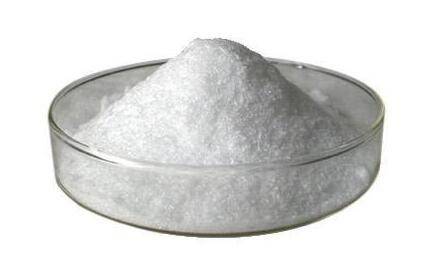
2. Application in Cosmetic and Pharmaceutical Products
Rice bran wax can be widely used in cosmetics and other daily-use chemical industries, it is cheap and widely available. For example, instead of Brazilian carnauba wax to make lipstick, the main components of lipstick are: the base is oil, wax, and softener, the function is to make the lipstick solidify, and last. Wax: carnauba wax, beeswax is the most commonly used, and carnauba wax is less likely to melt. Oils: mineral oil, onion oil, lanolin, paraffin oil (petroleum jelly). Softeners increase the ability of the color to adhere to the lips and also moisturize. The wax can be rice bran wax, which has a high freezing point and a lubricating effect. Rice bran wax can also be used as a coating agent for pharmaceuticals [6].
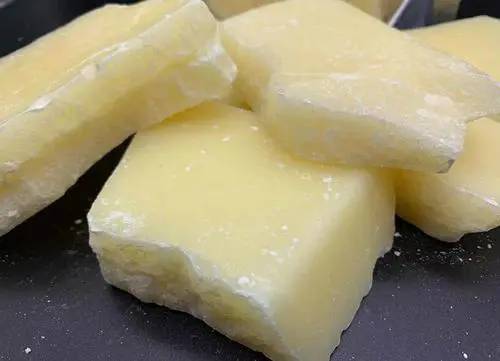
3. As Fruit and Vegetable Spray Preservatives
Artificial freshness coating agents initially used paraffin wax, Brazilian carnauba wax, beeswax, rosin, and so on after heating and melting and other emulsifiers compounded. Since the price of imported Brazilian carnauba wax is expensive, and the market demand is difficult to meet, so cheap rice bran wax can be used instead of imported Brazilian carnauba wax to prepare fruit preservation coating agents. Chen Xiluan et al. through the apple film preservation research showed that: the rice bran wax emulsification compound fruit preservation coating agent for apple preservation effect is very significant, and has a certain practical application significance. Using the existing technology and formula to produce the rice bran wax fruit preservation coating agent, with good film formation, stability, and gloss, and low cost, simple technology, simple operation, raw materials from a wide range of sources, easy to promote the application [7].
4. Other Uses
Rice bran wax can be used as food packaging and food additives such as chewing gum and gummies, etc. Because it is non-toxic, it has obvious advantages compared with mineral wax. Rice bran wax can also be used to manufacture high-level shoe polish, used as floor wax and furniture, automobile, equipment and so on polish wax, leather embellishing agent and so on. Rice bran wax can be used in the manufacture of high-level printing ink, copy paper ink, typing wax paper, used as waxed paper, glue light paper and other paper embellishments and paper product additives. At the same time, rice bran wax can also be used to manufacture fiber processing oils, and emulsions, improve the flexibility of fiber fabrics, slippery and gloss; used in polyvinyl chloride as plasticizers, stabilizers and lubricants; used as oil and grease heat-resistant thickening agent; used as electrical insulating materials, etc. [8][9].
Reference:
[1] Jiao Caishan, Wang Xingqiang. Extraction of Eicosanoids and Tricosanoids from Rice Bran Wax and Product Analysis[j]. Chemical Engineer, 2002, 91(4):14-15.
[2] Gu Zhiwei, Mao Jia, Huang Shaolie. Preparation of Eicosanoids from Rice Bran Wax Under Ultrasonic Conditions[j]. China Fats and Oils, 2008 , 33(6):54-56.
[3]Gui Xiaohua, Zheng Jingcheng. Research Progress on the Preparation of Tricosanol from Natural Waxes[j]. Journal of Wuhan Institute of Technology, 2008, 27(1): 31-34.
[4] Henon.G , K.Recseg , K.Kovari.Wax Analysis of Vegetable Oils Using Liquid Chromatography on a Double Adsorbent Layer of Silica Gel and Silver Nitrate-Impregnated Silica Gel[J].Journal of the American Oil Chemists'Society ,2001,78:401–41
[5] Hwang.K.T,S.L.Cuppett,C.L. Weller,M.A.Hanna,R.K.Shoemaker.Aldehydes in Grain Sorghum Wax[J].Journal of the American Oil Chemists' Society ,2002 ,79:529–533.
[6]Buffa.C.W,Rice Bran Wax,a New Wax for Cosmetics,Drugs,and Toiletries,Cosmet[J].
Toiletries ,1976 ,91:14–16.
[7]Chen Xiluan. Research on Rice Bran Wax Type Fruit Preservation Coating Agent[j]. China Fats and Oils, 1997 , 22(4): 58 ~ 60.
[8] Zhang Zhi-Hua, Wei Xiao-Li, PU Yan-Fang. Development and Application of Emulsifying Wax[j]. Heilongjiang Petrochemical Industry, 1996,(2):27-29.
[9]Ito.M , Characterization of Natural Waxes and Their Application to Cosmetic Foundations[J].Fragrance Journal ,2003 ,31:38–46.


 English
English French
French Spanish
Spanish Russian
Russian Korean
Korean Japanese
Japanese






